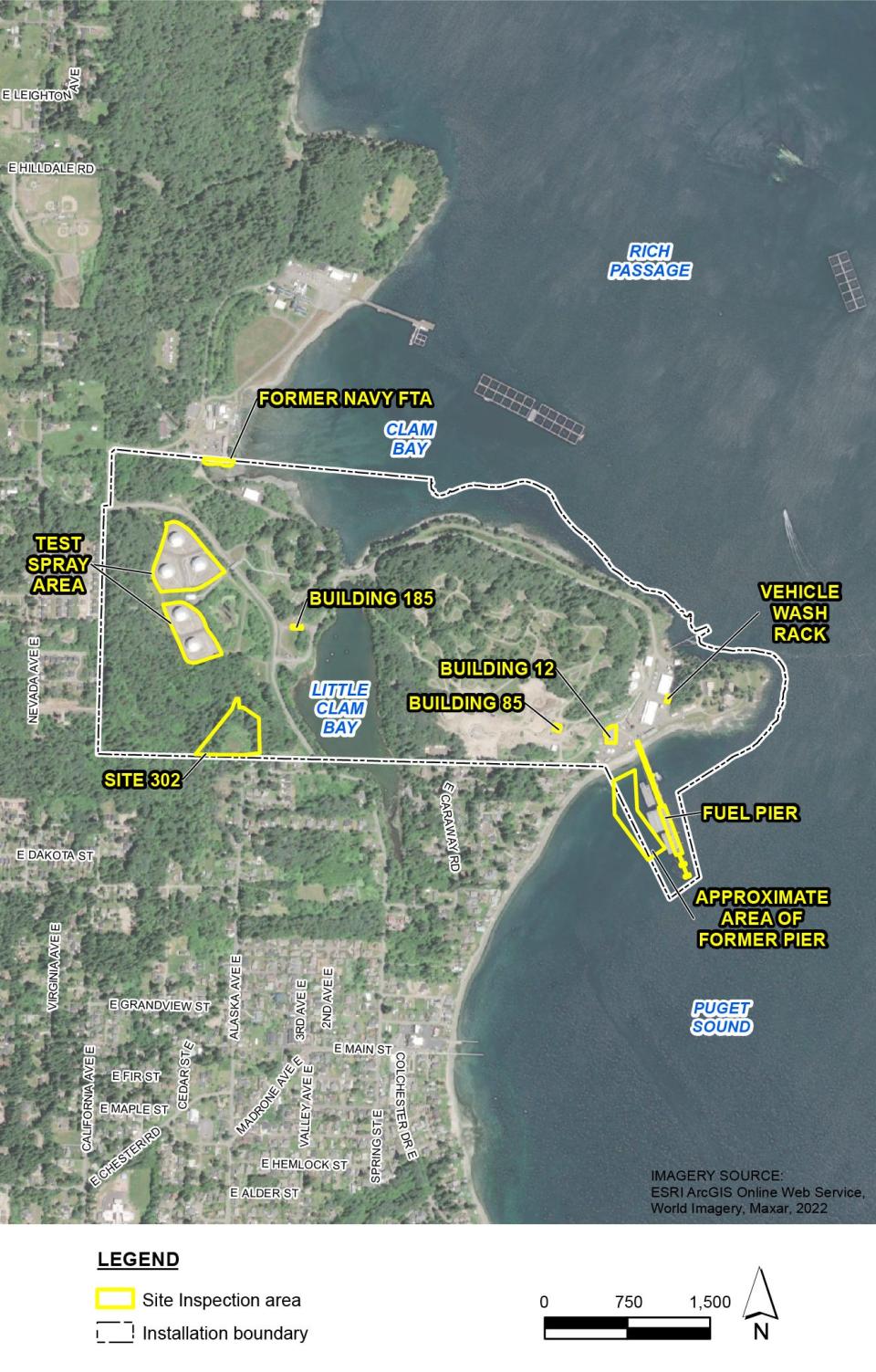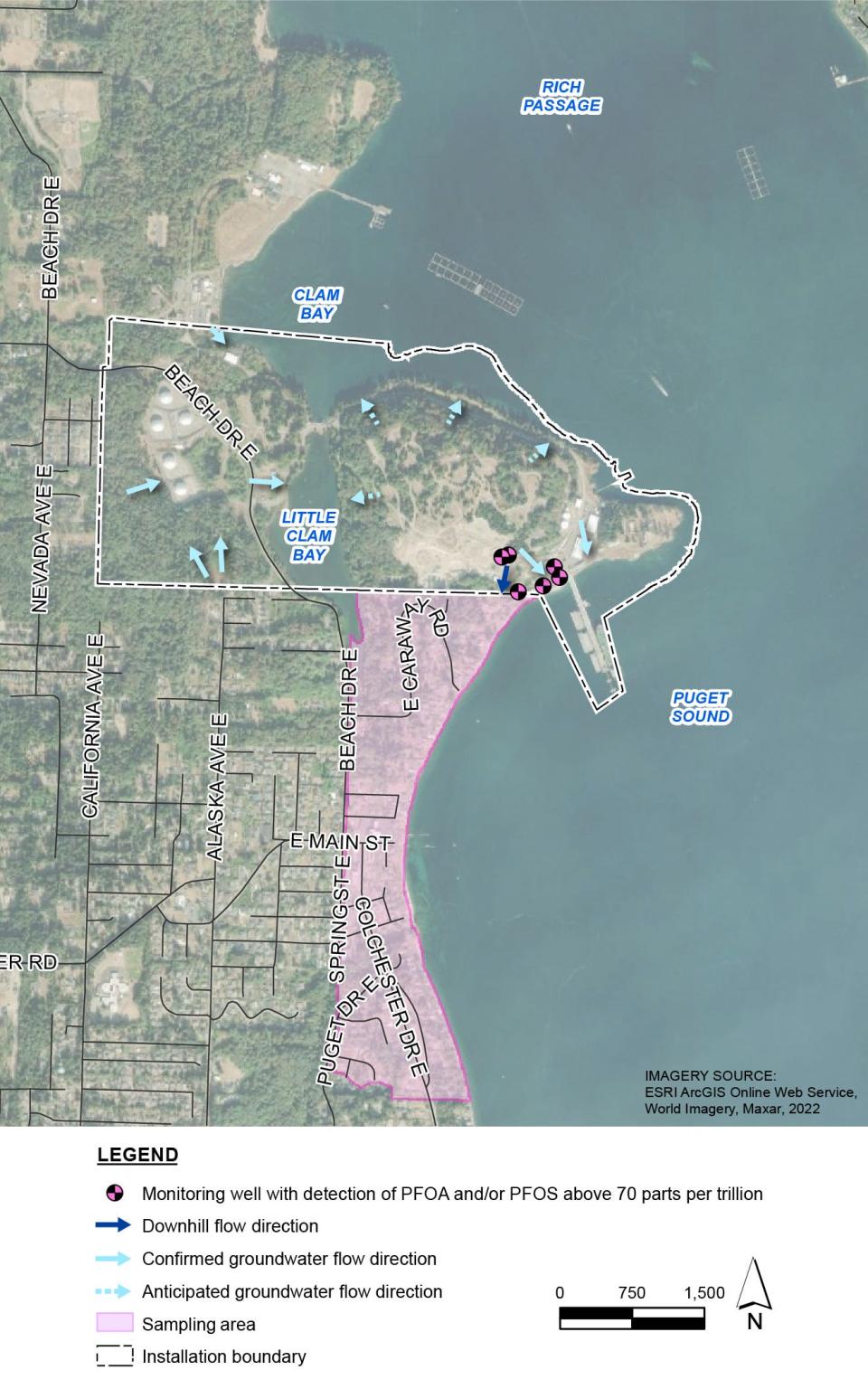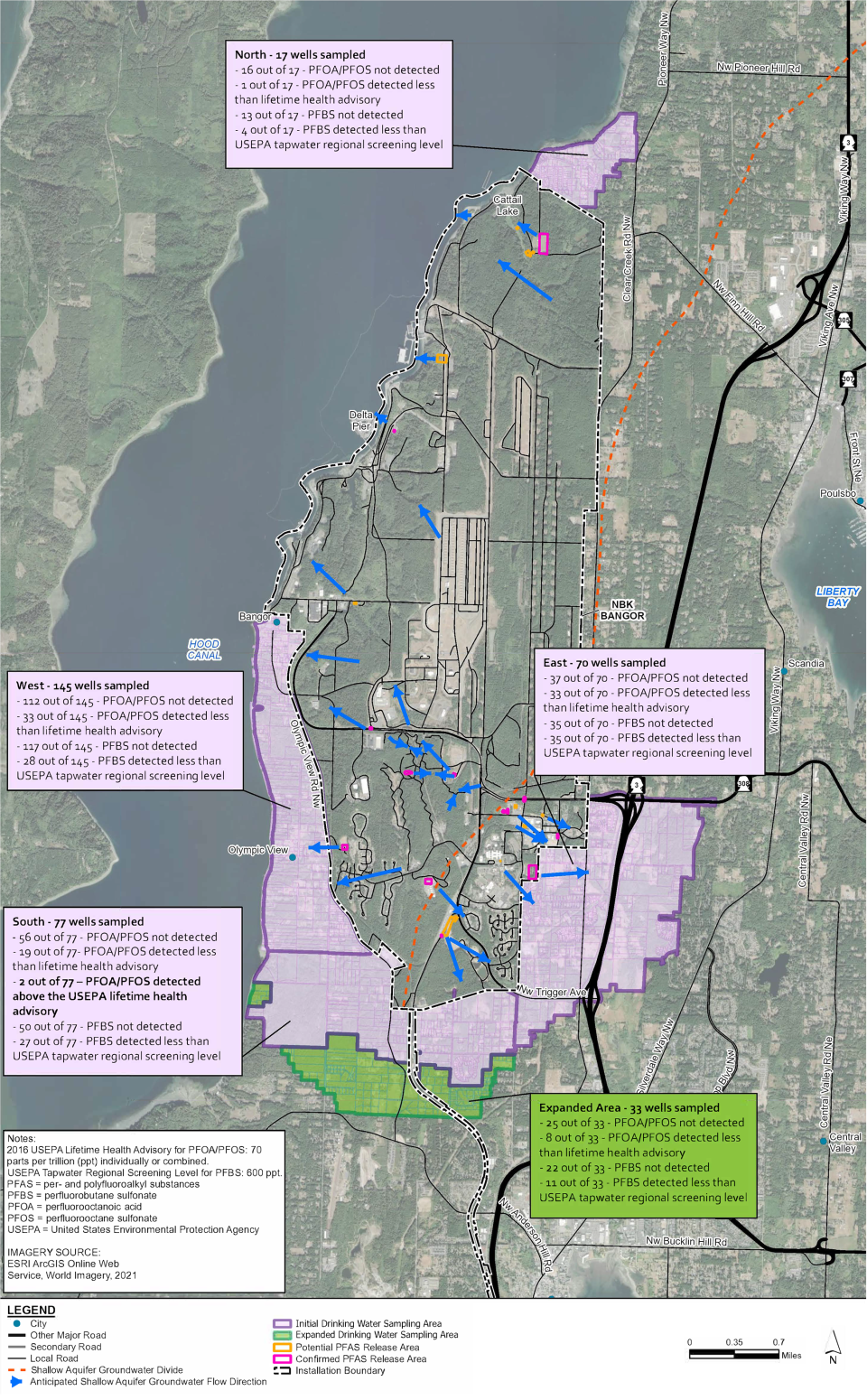Navy to test drinking water wells in Manchester after chemicals detected on base
MANCHESTER — Two types of per- and polyfluoroalkyl substances (PFAS) that exceed an advised environmental standard were detected at Naval Base Kitsap-Manchester last year, which triggered the Navy's plan to sample water wells in the surrounding area of the base.
The PFAS chemicals may exist in drinking water wells due to the previously used firefighting foam or other materials that contain the chemicals on base, the Navy said. A public meeting will be hosted from 5 p.m. to 7 p.m. on Tuesday, June 13 to inform the public of the Navy's plan to test the water wells near the Manchester base. The location of the meeting will be at Parkwood Community Club, 3045 Madrona Dr. SE in Port Orchard.
"We are committed to keeping the public informed of the Navy’s drinking water sampling," the Navy said in a statement announcing the public meeting.
Representatives from the Navy, the U.S. Environmental Protection Agency (EPA), Agency for Toxic Substances and Disease Registry, the state's Department of Ecology and Department of Health, Kitsap County Public Health District, and Manchester Water District will attend the public meeting to answer questions from the public, the Navy said.
What are PFAS chemicals?
Per- and polyfluoroalkyl substances (PFAS) are a large group of widely used, long-lasting chemicals that take a long time to break down. Evidence shows that continued exposure above specific levels to certain PFAS could lead to adverse health effects, according to EPA.
The man-made chemicals have been used in industrial and consumer products since the 1950s mostly for their stain- and water-repellent properties, the Navy said.
Though PFAS can be found in many products, PFAS in firefighting foam is the suspected source of most PFAS-contaminated drinking water in Washington, according to the Washington State Department of Ecology.
About 200 water sources in Washington have tested positive for PFAs between October 2021 and April 2023, according to data from the Washington State Department of Health.
Areas impacted by PFAS in the state include San Juan Island, Moses Lake, Issaquah, and areas near Fairchild Air Force Base, Joint Base Lewis-McChord, Naval Base Kitsap Bangor, Naval Air Station Whidbey Island and the Yakima Training Center, according to Washington State Attorney General's Office.
Washington State Attorney General Bob Ferguson last month filed a lawsuit against 20 manufacturers for PFAS used in firefighting foam (aqueous film-forming foam, or AFFF). The lawsuit requested the court to order the companies to pay past and future costs to respond to PFAS contamination as well as the damages caused to the state, according to a statement from the Attorney General's office on May 31.
The trial day of the lawsuit is slated for May 2024.
What's the background for the Navy to test PFOA and PFOS?
In May 2016, EPA issued lifelong drinking water health advisories of 70 parts per trillion (ppt) for two PFAS, perfluorooctanoic acid (PFOA) and perfluorooctane sulfonate (PFOS). The Department of the Navy in June of that year "developed a proactive policy to ensure the communities near Navy installations are not exposed to drinking water with PFOA and/or PFOS because of a known or potential Navy release of PFAS-containing materials," the Navy said.
In 2021, in a preliminary assessment, the Navy identified 8 areas in Naval Base Kitsap-Manchester where PFAS may have been released, which include a former firefighting training area, a former fire station an spill response warehouse, a test spray area, a JP-8 truck loading facility, the fuel pier and approximate area of the former pier, a Polychlorinated Biphenyl (PCB) disposal area, a former AFFF drum storage, and a vehicle wash rack.

From September to October 2022, the Navy collects soil and groundwater samples or surface water and sediment samples at the identified areas in Manchester. "PFOA and PFOS were detected in shallow groundwater above 70 parts per trillion (ppt)," the Navy said.
As the release of PFA was identified, the Navy established a sampling area 1 mile in the direction of groundwater flow from where the chemicals exceeded the advised standard were detected. Sampling is provided to all property owners and tenants whose property is in the sampling area and whose drinking water is supplied by groundwater, said the Navy.

Residents whose drinking water is provided by Manchester Water District are not asked by the Navy to sample the water and those who have questions regarding the treatment and testing of drinking water should contact the district, the Navy said.
Located in South Kitsap, the NBK-Manchester Fuel Depot is the Department of Defense's largest single-site fuel facility in the continental United States, according to the Navy. The depot provides military-grade fuel, lubricants and additives to the U.S. and its allies.
When would the residents know the results of the testing?
Once the samples are collected, preliminary results would come out about 30 days later. The Navy will notify the home owners and tenants of their results and any follow-up actions. Bottled water will be provided to those living in the sampling area, who have a drinking water well that contains the chemicals above 70 ppt, and don't have an alternate water source.
"The Navy will continue to provide bottled water until a permanent solution is implemented," the Navy said.
What happened to the previous PFAS tests in Bangor?
More: Navy expands testing of water after wells near Bangor base found with contamination
It was not the first time PFAS above the EPA's 2016 health advisories were identified in a military base in Kitsap County. The Navy tested drinking water wells in some areas next to Naval Base Kitsap-Bangor for certain PFAS beginning in 2020 and found two wells containing PFOA and/or PFOS above 70 ppt among the 342 water samples.

The affected residents are given bottled water for drinking and cooking. An evaluation of potential long-term solutions for the affected property was conducted and an "Engineering Evaluation and Cost Analysis (EE/CA)" to evaluate permanent solutions will be present for public comments for one month.
The public can view and comment on the evaluation document from June 12 to July 12 this year, the Navy said.
So, is the Navy still using firefighting foam that has PFAS on base?
The Navy limited the use of PFAS-containing AFFF to only emergency conditions in 2016. Since that year, it contained, captured, and disposed of any release of such firefighting foam. Instead of AFFF, the Navy now uses water for firefighting training activities, according to the Navy.
In January, the Navy issued a new military specification for a formulation of AFFF without PFAS chemicals. Products for the new specification are not available now. The Navy will continue to use products that have lower concentrations of PFOA and PFOS and "continue to take steps to prevent or minimize additional release of firefighting foam to the environment," the Navy said.
Reporter Peiyu Lin covers the military for the Kitsap Sun. She can be reached at pei-yu.lin@kitsapsun.com or on Twitter @peiyulintw.
Support local journalism. Subscribe to kitsapsun.com today.
This article originally appeared on Kitsap Sun: Navy testing drinking water wells near Manchester Fuel Depot for PFAS

